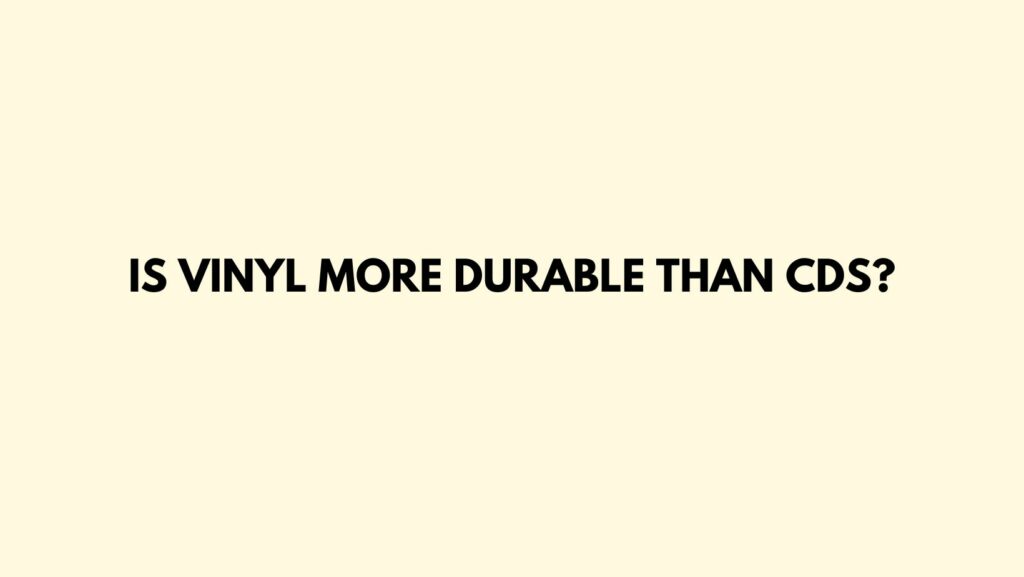As music enthusiasts navigate the realms of analog and digital audio, one question often lingers in the audiophile’s mind: Is vinyl more durable than CDs? The durability of these two iconic formats has long been a subject of debate, with each format boasting its unique qualities. In this article, we unravel the durability dilemma, exploring the factors that contribute to the longevity of vinyl records and CDs and dispelling common myths surrounding their robustness.
Vinyl Records: Time-Tested Resilience
Material Composition: Vinyl records, made from polyvinyl chloride (PVC), have proven to be remarkably resilient over time. The physical composition of vinyl contributes to its ability to withstand wear and tear, making it a durable medium for music storage.
Resistance to Scratches: Contrary to popular belief, vinyl records are less susceptible to scratches than commonly assumed. The groove-based playback system ensures that minor scratches have minimal impact on sound quality. Additionally, advancements in turntable technology and stylus materials contribute to gentler playback, reducing the risk of damage.
Handling and Storage Considerations: Proper handling and storage play a crucial role in the durability of vinyl records. Storing records upright, away from direct sunlight and extreme temperatures, and handling them with clean hands and a delicate touch contribute to their long-term resilience.
CDs: The Digital Fortress
Polycarbonate Construction: Compact Discs, constructed from polycarbonate plastic, offer a robust and durable medium for digital audio storage. The polycarbonate layer acts as a protective barrier for the reflective metal layer containing the digital data, shielding it from external elements.
Resistance to Environmental Factors: CDs exhibit resilience against environmental factors that can impact other physical formats. Unlike vinyl, which may be sensitive to heat and humidity, CDs are less prone to warping or damage due to changes in climate.
Scratch Resistance: CDs are designed to resist scratches effectively. The data on a CD is read from the bottom side, and the top layer acts as a protective barrier. Minor scratches typically have minimal impact on sound quality, and the error correction capabilities of CD players further mitigate potential issues.
Common Myths and Misconceptions:
- Vinyl Scratches Easily: While vinyl records can be scratched, the impact on sound quality is often overemphasized. Gentle handling and proper maintenance can significantly reduce the risk of scratches affecting playback.
- CDs Are Indestructible: While CDs are durable, they are not entirely indestructible. Deep scratches, exposure to extreme temperatures, or prolonged exposure to sunlight can still compromise a CD’s integrity.
Conclusion: The Verdict on Durability
The durability debate between vinyl records and CDs reveals that both formats have inherent strengths that contribute to their resilience. Vinyl records, when treated with care, can withstand the test of time and maintain their sonic integrity. CDs, constructed with sturdy materials and designed for longevity, offer a reliable and robust medium for digital audio.
Ultimately, the longevity of both vinyl and CDs depends on how they are handled, stored, and maintained. Whether you prefer the tactile engagement and warm sound of vinyl or the digital precision and convenience of CDs, the key to ensuring their durability lies in responsible ownership and adherence to best practices for handling and storage. As technology evolves and the vinyl resurgence continues, enthusiasts can appreciate the enduring durability of both formats, each contributing to the rich tapestry of the audiophile experience.


